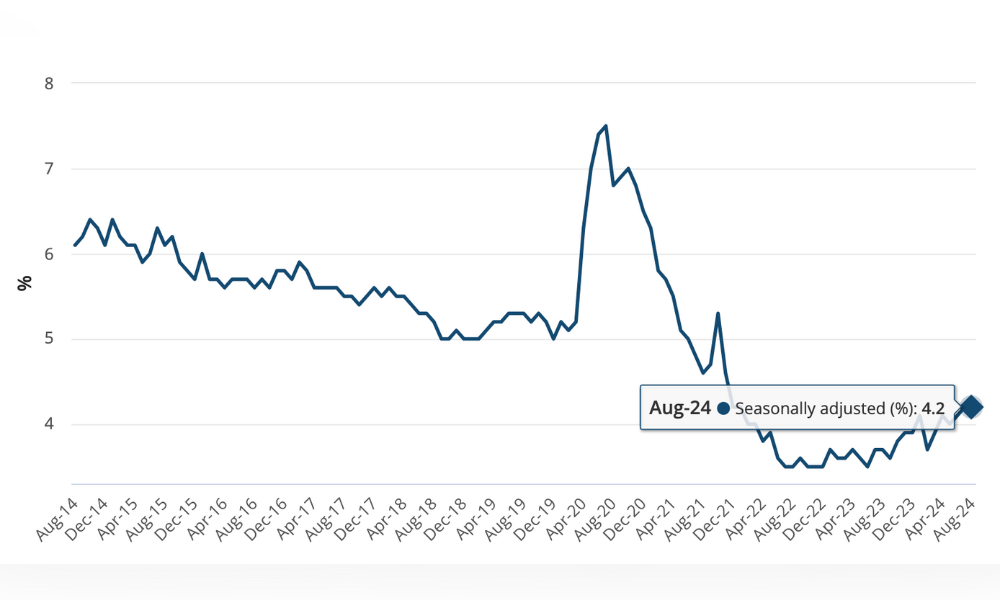
'There are still large numbers of people entering the labour force and finding work'

The unemployment rate held steady at 4.2% in August, according to data released by the Australian Bureau of Statistics (ABS) on Thursday.
Kate Lamb, Head of Labour Statistics at ABS, noted that the number of unemployed individuals decreased by approximately 10,000, while employment rose by about 47,000.
Despite these changes, the unemployment rate remained unchanged at 4.2%, and the participation rate stayed at a record high of 67.1%.

Source: Australian Bureau of Statistics
"The growth in employment increased the employment-to-population ratio by 0.1 percentage point to 64.3%, which is just below the November 2023 historical high of 64.4%," Lamb said in a statement.
She added that the employment-to-population ratio for men increased by 0.2 percentage points to 68.1%, while the measure for women held steady at 60.6%, near its historical high.
"The high employment-to-population ratio and participation rate show that there are still large numbers of people entering the labour force and finding work, as employers continue to look to fill a more than usual number of job vacancies," she said.
South Australia, Western Australia, and the Australian Capital Territory saw the lowest unemployment rate across the country of 3.9%.
"Today's result has South Australia leading the nation with the equal lowest unemployment rate in the country," said South Australian Treasurer Stephen Mullighan in a statement.
"It reinforces the strength of our jobs market, with 44,000 jobs created since the Malinauskas government was elected in 2022."
Australia's other states and territories recorded the following unemployment rates:
Innes Willox, Chief Executive of the national employer association Ai Group, said the labour market remains "surprisingly strong" given the pace of wage increases and the number of businesses looking to cut costs.
"A key factor behind labour market strength is the disproportionately strong growth in public sector employment with businesses increasingly reporting increased competition in the labour market from the public sector," Willox said in a statement.
Meanwhile, monthly hours worked, seasonally adjusted, increased by 0.4% in August, outpacing the 0.3% rise in employment.
"The proportion of people working reduced hours due to illness remains above pre-pandemic levels. However, the proportion working fewer hours due to economic reasons, such as lack of work, is below pre-pandemic levels, indicating continued relative tightness in the labour market," Lamb said.
The underemployment rate rose by 0.1 percentage points to 6.5%, though it was 0.1 percentage points lower than in August 2023 and 2.2 percentage points lower than in March 2020.
The underutilisation rate, which combines unemployment and underemployment, stayed steady at 10.6%, well below the 13.9% recorded in March 2020, prior to the COVID-19 pandemic.